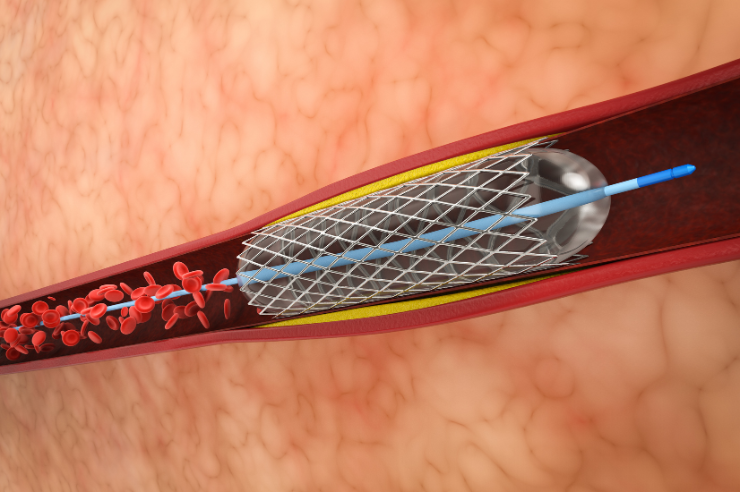Angioplasty

Angioplasty is a minimally invasive procedure used to open up blocked or narrowed blood vessels. It is commonly performed to treat coronary artery disease, which can lead to heart attacks. The goal of angioplasty is to restore proper blood flow to affected areas, improving heart function and reducing symptoms like chest pain.
How Does Angioplasty Work?
The procedure begins with the insertion of a catheter, typically through the groin or wrist, and is guided to the site of the blockage under X-ray imaging. A small balloon at the catheter’s tip is then inflated at the site of the blockage, compressing the plaque against the vessel walls and widening the artery. In many cases, a stent, which is a small mesh tube, is also inserted to keep the artery open after the balloon is deflated and removed.
Types of Angioplasty
- Balloon Angioplasty: Uses a balloon to push plaque against the artery walls, improving blood flow.
- Stent Placement: Involves inserting a stent to support the artery and prevent future blockages.
- Drug-Eluting Stent: A type of stent that releases medication to reduce the risk of re-blockage.
Benefits of Angioplasty
Angioplasty offers several advantages, including:
- Minimally Invasive: The procedure requires only small incisions, reducing recovery time and hospital stay.
- Effective: Quickly restores blood flow, alleviating symptoms like chest pain and shortness of breath.
- Improves Quality of Life: Helps patients return to normal activities with fewer limitations and reduced risk of heart-related issues.
Why Choose Angioplasty?
Angioplasty is a proven and effective method for treating blockages in arteries, particularly in the heart. By improving blood flow, it can significantly enhance a patient’s quality of life and reduce the risk of serious cardiovascular events.
